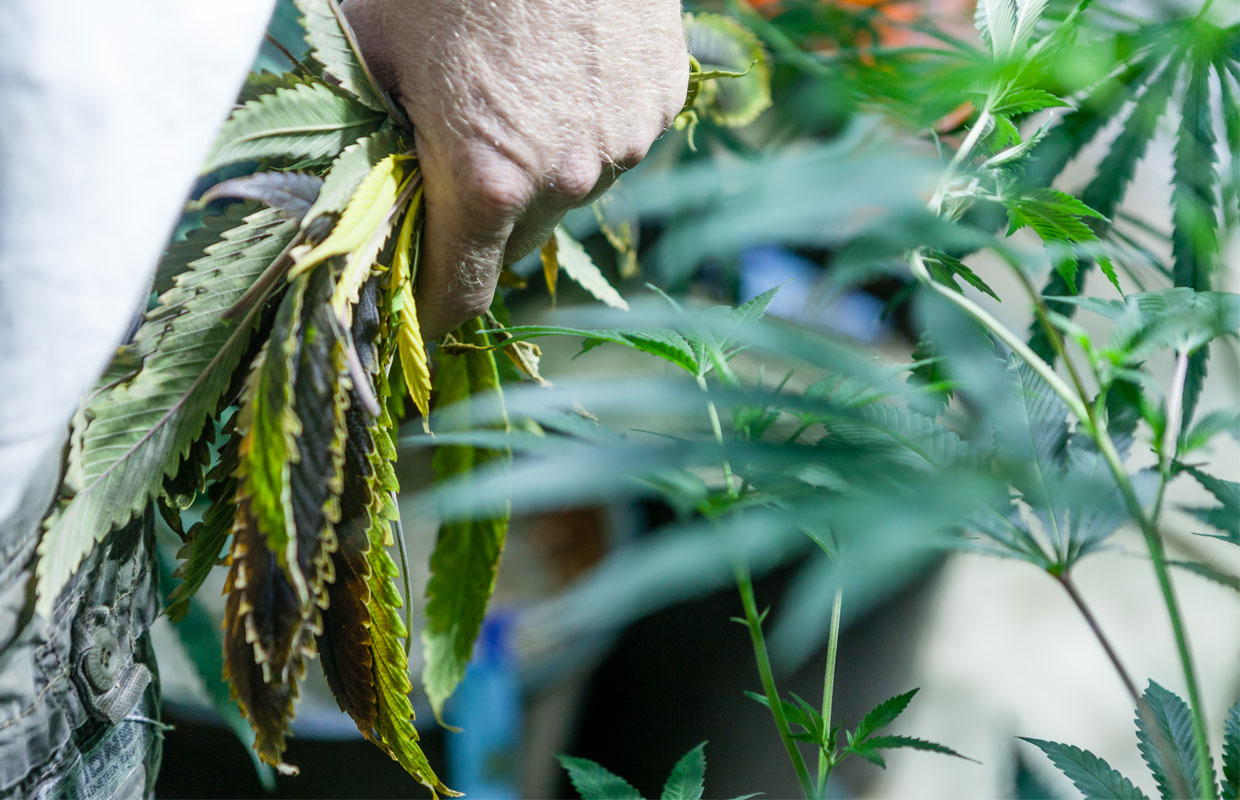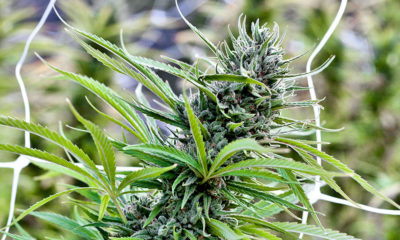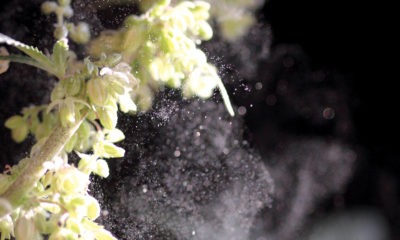The Pesticide Dilemma
Colorado, Oregon, California and other legal states are tightening their list of allowed pesticides.
Like the entirety of traditional agriculture, marijuana cultivators are obsessive about the pests that regularly threaten their crops’ health. And those daily battles with spider mites, powdery mildew and other plant-threatening pests are the reason so many cannabis growers have turned to potent, active-chemical pesticide brands such as Eagle 20, Avid or Mallet to protect and sometimes save their crops – and their financial investments.
And this is where the pot-and-pesticides issue becomes truly sticky icky, introducing yet another state-versus-federal clash to the fledgling cannabis industry’s already busy warfront – and adding to the deep complexity that already exists inside America’s newest billion-dollar industry.
“Over 200 million people live in jurisdictions where some form of marijuana is legal,” said U.S. Rep. Earl Blumenauer (D-Oregon). “We really need to know what’s going on in the production of this plant.”
Jeffrey Raber, CEO of Washington state botanicals lab the Werc Shop, said the pesticide issue should not be underestimated: “In terms of consumer protection, pesticides are the number one issue right now in this industry. It’s right up there with banking, in terms of the challenges facing the industry.”
This particular conversation starts at the federal level: The U.S. Environmental Protection Agency governs all American pesticide use and registers every pesticide – save for the minimum-risk pesticides that are so nontoxic they “pose little to no risk to human health or the environment.” (These unregistered pesticides are important, and we’ll get to them later.)
Traditional farmers and weekend garden enthusiasts are familiar with the adage: “The label is the law.” It means, in part, that registered pesticides can only be used on the plants and crops the EPA registers them for, and this information is on the label, which is legally enforceable.
“It is a violation of Federal law to use this product in a manner inconsistent with its labeling,” is the warning you’ll find on every registered pesticide product in the U.S. (and a more formal version of “The label is the law”). And because you’re already aware of the cannabis industry’s still-prevalent banking and tax frustrations, I’m sure you see where this is going: Because marijuana is still federally illegal, it is not listed on a single registered pesticide label in America.
The Grower’s Prerogative
So what’s a grower to do? And more importantly, what’s a legal-marijuana state to do in the complete absence of federal guidance?
“These growers didn’t know. They had no guidance,” said Mowgli Holmes, co-founder and chief scientific officer at Oregon cannabis-testing laboratory Phylos Bioscience and a Cannabis Safety Institute board member. “It’s probably a little too early to be scolding people for being bad citizens. But using some of that stuff, like Eagle 20, is pretty hard to defend.”
The pesticides commonly (and oftentimes illegally) applied to cannabis have made headlines in Oregon and California, where state regulations are currently in flux. But in Colorado, the debate reached a fever pitch last year as more than 100,000 cannabis plants were put on hold over pesticide concerns in February and March – and now 100-plus marijuana products from 10 state-licensed cannabis companies have undergone voluntary recalls.
The recalls have applied to more than 100,000 packages of marijuana flower, cannabis concentrates, hash oil-loaded vape pen cartridges, pre-rolled joints and pot-infused edibles. The city of Denver’s Department of Environmental Health has issued its 14th recall on marijuana products in as many weeks, spurring a wave of concern from industry watchdogs – but only a muted reaction from customers, who were hardly rushing to return tainted products to stores because many of them had been on shelves for months and had already been purchased and consumed.
The mixed reaction to the cannabis recalls in Denver can in part be attributed to the current lack of knowledge on the subject of pot pesticides. Why are these specific chemicals and pesticides banned for use on cannabis when they’re allowed on many food crops? What pesticides are actually allowed for use on marijuana plants throughout the U.S.? And has anyone actually gotten sick from ingesting these potentially dangerous, banned chemicals?

No Fed Rules Established
In its investigations surrounding the cannabis recalls, the city of Denver has focused on five chemicals it considers to be among the most concerning and prevalent in marijuana cultivations. Myclobutanil is the active ingredient in pesticide brand Eagle 20, and it’s considered a “bad actor” by the Pesticide Action Network and “slightly hazardous” by the World Health Organization (WHO). Imidacloprid is found in Merit and Mallet brands, and the WHO considers it “moderately hazardous.”
The other three chemicals Denver is looking and testing for: Etoxazole (found in TetraSan 5 WDG brand), spiromesifen (found in Oberon, Judo and Forbid) and abamectin/avermectin (found in Avid and Lucid).
While the above brands are legal for use on certain food crops, the EPA sets a tolerance of pesticide residues for each application. No tolerances have been established for marijuana, because of its illegal federal status and because the pesticide companies have yet to embark on the lengthy and expensive process of testing their products on cannabis and, ultimately, the plant’s unique use pattern, which involves the application of severe heat followed by inhalation or ingestion.
And because of that lack of research, scientists don’t exactly know what happens when a patient or recreational user puts a lighter to pesticide-peppered marijuana flower – or drops a chemical-tainted dab into a burning hot nail – and inhales the chemicals directly into the bloodstream.
But most scientists are encouraging caution in absence of hard facts.
“What’s the worst that could happen? Neurotoxicity, kidney failure, liver damage – that could be really bad if you have heavily saturated product and people need a lot of it and they need it every day and they’re using it for months,” said the Werc Shop’s Raber. “That’s chronic exposure, not acute exposure, like one-time use.”
Colorado Governor John Hickenlooper addressed the issue in mid-November when he issued an executive order that told state agencies that all cannabis grown with banned pesticides is a threat to public safety and should be destroyed. These concerns, as well as the ever-changing lists of approved-for-pot pesticides many states maintain, have had marijuana growers paying careful attention to their pesticide cabinets and logs.
Health Risks Uncertain
In its sprawling critique of the legal cannabis industry’s precarious relationship with pesticides, D.C.-based nonprofit Beyond Pesticides (formerly known as the National Coalition Against the Misuse of Pesticides) recommends that states follow New Hampshire’s regulation, “which restricts growers to pesticides that are allowed for use in organic production and exempt from federal regulation.”
These unregistered pesticides include neem, peppermint and cinnamon oil, which are so nontoxic that no tolerance levels are necessary for their residues.
For cannabis, “we allow any pesticides that are approved for use on organic farming,” said Rod Bascom at the New Hampshire Department of Health and Human Services. His colleague at the department, John Martin, added, “We’re concerned about the folks out there who are going to qualify to use cannabis as a part of their medical treatment program, and they’re medically compromised already.”
The author of the Beyond Pesticides report, the organization’s executive director Jay Feldman, said years of testing should be required before any registered pesticides are allowed for application on cannabis.
“Registered pesticides should not be allowed in marijuana production, and that is because these chemicals have not been tested for this use pattern and evaluated for their impacts on human health and the environment,” Feldman told us. “Without that kind of assessment, none of the states should be allowing use for cannabis production.”
It’s important to note, however, that no cannabis consumers have reported any sickness from ingesting pesticide-tainted marijuana or pot products. It’s so important that the city of Denver includes these four sentences in each of its press releases announcing additional marijuana recalls:
“There have been no reports of illness. The possible health impact of consuming marijuana products with unapproved pesticide residues is unknown. Short- and long-term health impacts may exist depending on the specific product, duration, frequency, level of exposure and route of ingestion. Consumers with concerns about their personal health should contact their physician with related questions.”
Phylos Bioscience’s Holmes says that regular users of potent cannabis extracts might want to check in with their doctors, especially because many extraction processes for marijuana concentrates not only amplify cannabinoids such as THC and CBD but also any pesticides that are present, making extracts and oils particularly vulnerable to high levels of pesticide residues.
“The only thing that really worries me, and this is the absolute worst case scenario, is that the kids smoking dabs that are high in pesticides have some problems as a result,” Holmes said. “In the last year, you have people smoking a lot of dabs that are high in pesticides. If I was one of those people, I’d want to go to the doctor and get blood work done and make sure I’m OK.”
Even without any reported illnesses, two marijuana consumers in Colorado filed a lawsuit in early October against LivWell, one of the state’s largest marijuana companies and one of the cultivations that had tens of thousands of plants put on hold after Denver caught them using banned pesticides.
“In a larger sense, they’re saying the marijuana industry can’t go on unchecked, and someone has to do something to stop these people from using Eagle 20 and other harmful pesticides,” the plaintiffs’ attorney told The Denver Post in October.
With the calendar’s recent turn to 2016, an important year to so many legalization advocates, marijuana’s pesticide problem is hardly solved.
Colorado, Oregon, California and other legal states are tightening their list of allowed pesticides. Industry is learning to cope with the safer, if less aggressive, pest control methods, in part by altering growing conditions and adding more employees to their cultivation teams. And for the first time, the EPA says it is opening access to its 24(c) registration program to pesticide makers wanting to apply for a “special local need” exemption for marijuana. But with so much still unknown, “there should be a sense of urgency” on the issue, said U.S. Congressman Blumenauer.
“It’s serious because we don’t know how serious it is,” Blumenauer said. “If you’re taking a product that’s cultivated and processed and concentrated, and the concentrations of the pesticides may be many times higher, that’s not what you do with watermelon and carrots. You’re not really processing and concentrating and inhaling carrots.
“It’s potentially quite serious, and we should treat it that way until we’ve been able to thoroughly examine it scientifically.”
Originally published in issue 19 of Cannabis Now. LEARN MORE























